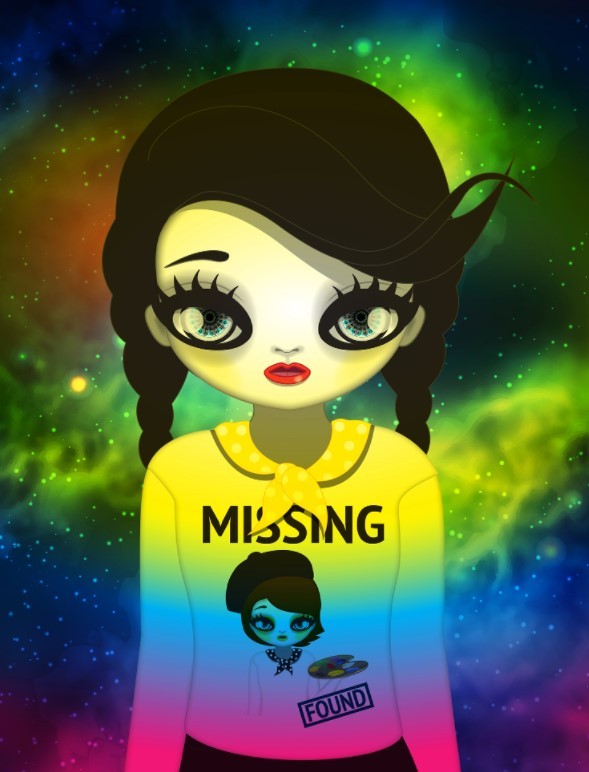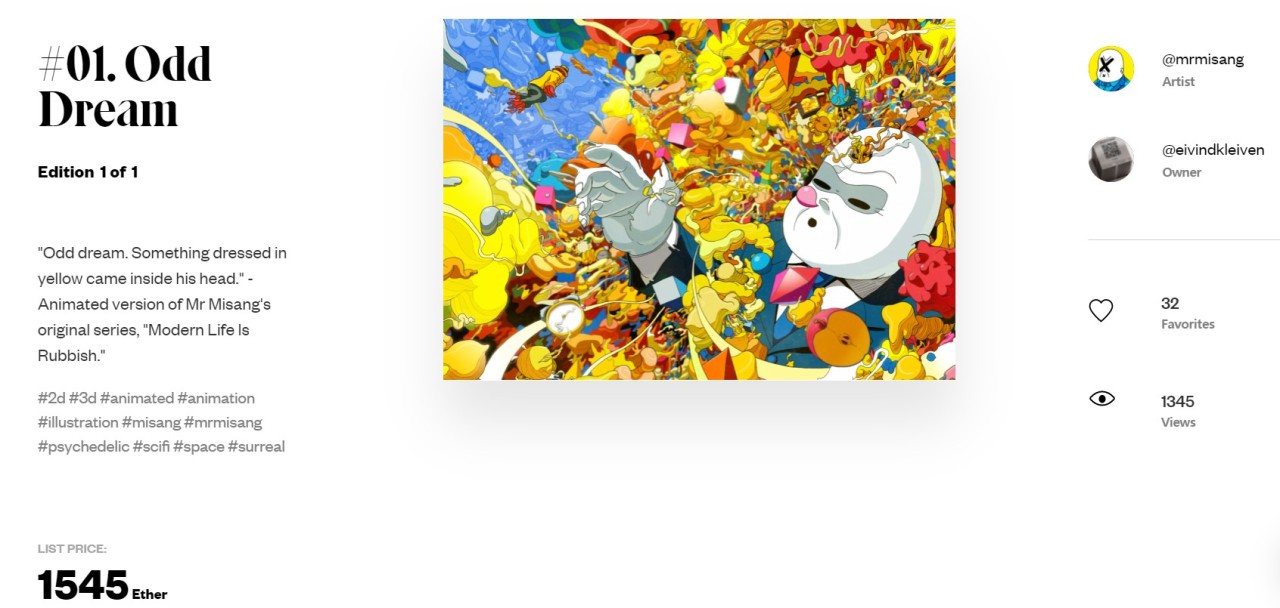[Feature] NFT art shakes up Korean art market
Hype around NFT artworks met with caution in Korean art scene where the digital asset-market is still in its infancy
By Park YunaPublished : June 9, 2021 - 17:25

When it was recently announced that NFT-based artworks by Korean modern art masters -- Kim Whan-ki, Park Soo-keun and Lee Jung-seop -- would go on the block at an online auction, the Korean art industry was bewildered.
The families and foundations raised copyright issues, claiming that they owned the original works and had never given the rights for those works to be minted as nonfungible token artworks. Minting refers to the process of tokenizing an asset and once an artwork is minted, it becomes part of the Ethereum blockchain.
Wannabe International, the auction organizer, eventually canceled the auction and apologized to the families.
While the recent hype surrounding NFT-based artworks has generated excitement, it has also raised concerns over copyrights, as demonstrated by the recent auction fiasco, as well as questions about how the art industry can embrace the new blockchain system-based digital art market.
Nonfungible token, or NFT, is a unit of data stored on a digital ledger known as blockchain. Each NFT is unique and acts as a digital certificate attesting to a work’s authenticity and is used to represent an item such as an artwork. Most NFTs are part of the Ethereum blockchain.
While NFT art marketplaces are now common around the world today, Korean firms have just started to launch their own NFT art platforms, including Wannabe International. One of the country’s four largest cryptocurrency exchanges, Korbit, recently launched the platform NFT Marketplace, while company Pica Project runs Pica Agora, an NFT-based art trading platform.
“Many artists are reaching out, asking to collaborate with us,” said an official from Pica Project which ran the first NFT art auction in March. The NFT-based animated artwork “Missing and Found” by Mari Kim fetched 288 Ether, equivalent to around $600,000 at the time. It was the most expensive piece sold in Kim’s career.

"The market is literally an infant market in the art industry, and South Korea is embracing the market very fast, which was first led by local artists. Now many Korean companies are moving to launch NFT art platforms,” said Kathleen Kim, a lawyer specializing in art at LIWU Law Group.
“But those local companies that provide NFT art platforms do not clarify the difference between copyright and ownership. They need to notify the terms of copyrights for their clients like other global platforms. If a work is minted without the owner’s knowledge, it could constitute copyright infringement,” Kim said.
Korean NFT artists are cautious about using Korean NFT art platforms for this exact reason, she added.
Seoul Auction, a major art auction firm in the country, has also jumped on the bandwagon, signing a partnership with Dunamu, a fintech firm that operates the cryptocurrency exchange Upbit. The auction firm is planning an NFT art contest to promote talented digital artists as well.
When asked about the details of the partnership, the company refused to discuss details, claiming they are “confidential for now.”
“How the artistic value is assessed for NFT artworks is still vague. But everyone can be an artist in the NFT art world, which is, in fact, a good opportunity for artists,” said Yu Na-ri, a public relations and marketing senior specialist at Seoul Auction Blue. “When it comes to the NFT art market, the buyers give value to the artworks. When clients buy the works, they become art.“
Some galleries and auction houses are bracing themselves for any changes to come that could threaten the status quo. While they are following the industry’s developments, they are mostly wary and reserved. Artists are confused as to whether it’s the right time to join the fast-evolving new digital market.
“It seems NFT art is overheated at the moment. We are keeping an eye on the market, but I think it is a little early to jump in. Do we even have any NFT specialist? I don’ think so,” an official from an auction house told The Korea Herald. “The NFT art world seems chaotic.”
“I would say nearly 99.9 percent of people in the art field are alienated except those who are benefiting from digital art and the companies that provide NFT art platforms. The art world seems to be split between those who know the virtual world and those who don’t,” said Joo Henna, executive director at Arario Gallery.
Arario Gallery, one of the leading galleries in Seoul, is exploring the potential of the blockchain system rather than NFT art itself.
“We need to contemplate on how we can utilize blockchain in the art world, for example as a means to protect the authentication of artworks,” said Joo, who is also an associate professor of art and cultural management at Hongik University’s Graduate School of Business Administration.
Fast-growing market, new digital art era
NFT art began to make global headlines when “Everydays: the First 5,000 Days,” a collage by American digital artist Mike Winkelmann who goes by the name Beeple, sold for 42,329 Ether at Christie’s in March. Video art pioneer Paik Nam-june’s well-known work, “Global Groove,” was also turned into an NFT artwork for the first time and sold for $56,250 at a Christie’s auction last week.
Yoo Jin-sang, a professor at Kaywon University of Art and Design, says the fledgling market still needs time to find its footing.
“The NFT market is quite new and a wide range of works are available at the moment,” he said. Yoo directed “NFT Villa,” an NFT art exhibition held in May in Seoul that introduced artists in the field.
“For now, we are not sure about the potential of NFT art collecting, but with more people participating in the market, it will definitely increase many artists’ productivity,” he said.
Some experts have lauded NFT art for paving a way for digital artists who have been stuck in a grey area with little chance of showcasing their works.

Illustrator Mr. Misang, who calls himself a “crypto artist,” is one of the first Korean success stories in the global NFT art market. His animated “Modern Life is Rubbish” series became a big hit on SuperRare, a global NFT art market platform.
“For digital artists, it has been difficult to sell their digital artworks except in cases where museums collect their works. So it is quite meaningful for artists who have been pursuing digital art as they now have markets to sell their works,” lawyer Kathleen Kim said.
By Park Yuna (yunapark@heraldcorp.com)








![[Graphic News] More Koreans say they plan long-distance trips this year](http://res.heraldm.com/phpwas/restmb_idxmake.php?idx=644&simg=/content/image/2024/04/17/20240417050828_0.gif&u=)
![[KH Explains] Hyundai's full hybrid edge to pay off amid slow transition to pure EVs](http://res.heraldm.com/phpwas/restmb_idxmake.php?idx=644&simg=/content/image/2024/04/18/20240418050645_0.jpg&u=20240419100350)






![[From the Scene] Monks, Buddhists hail return of remains of Buddhas](http://res.heraldm.com/phpwas/restmb_idxmake.php?idx=652&simg=/content/image/2024/04/19/20240419050617_0.jpg&u=20240419175937)

![[KH Explains] Hyundai's full hybrid edge to pay off amid slow transition to pure EVs](http://res.heraldm.com/phpwas/restmb_idxmake.php?idx=652&simg=/content/image/2024/04/18/20240418050645_0.jpg&u=20240419100350)

![[Today’s K-pop] Illit drops debut single remix](http://res.heraldm.com/phpwas/restmb_idxmake.php?idx=642&simg=/content/image/2024/04/19/20240419050612_0.jpg&u=)